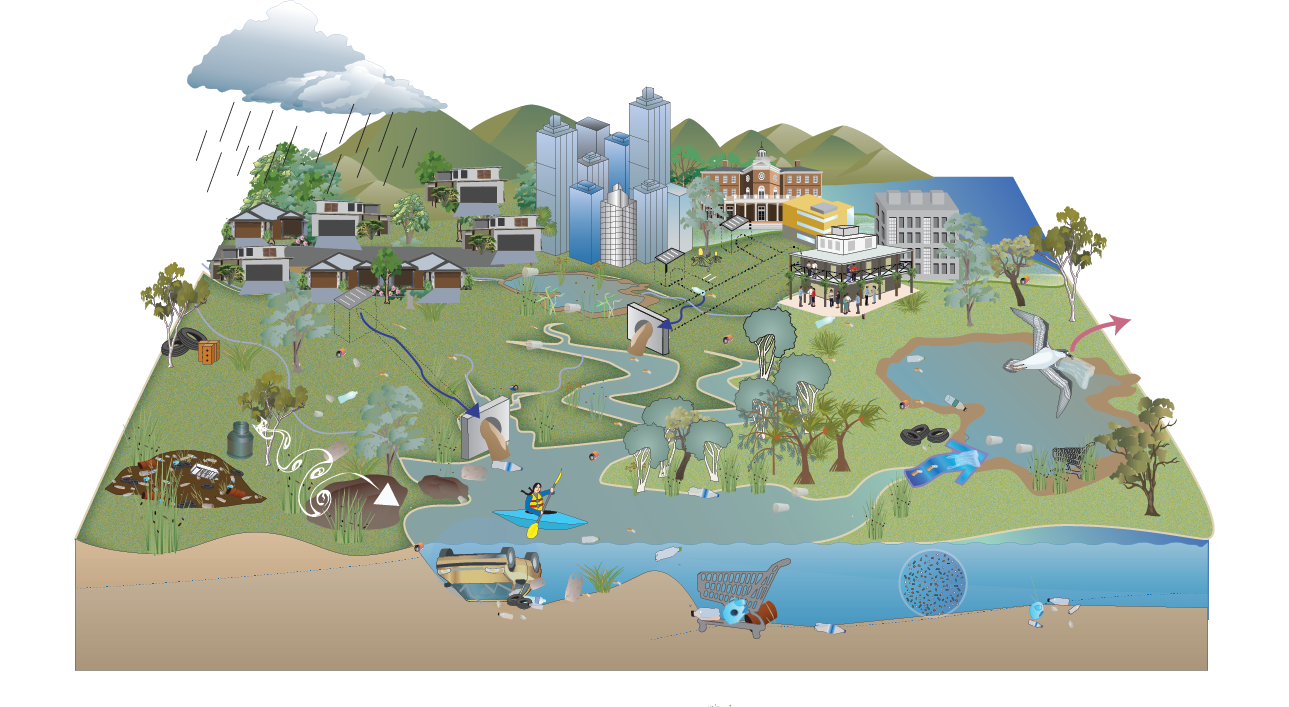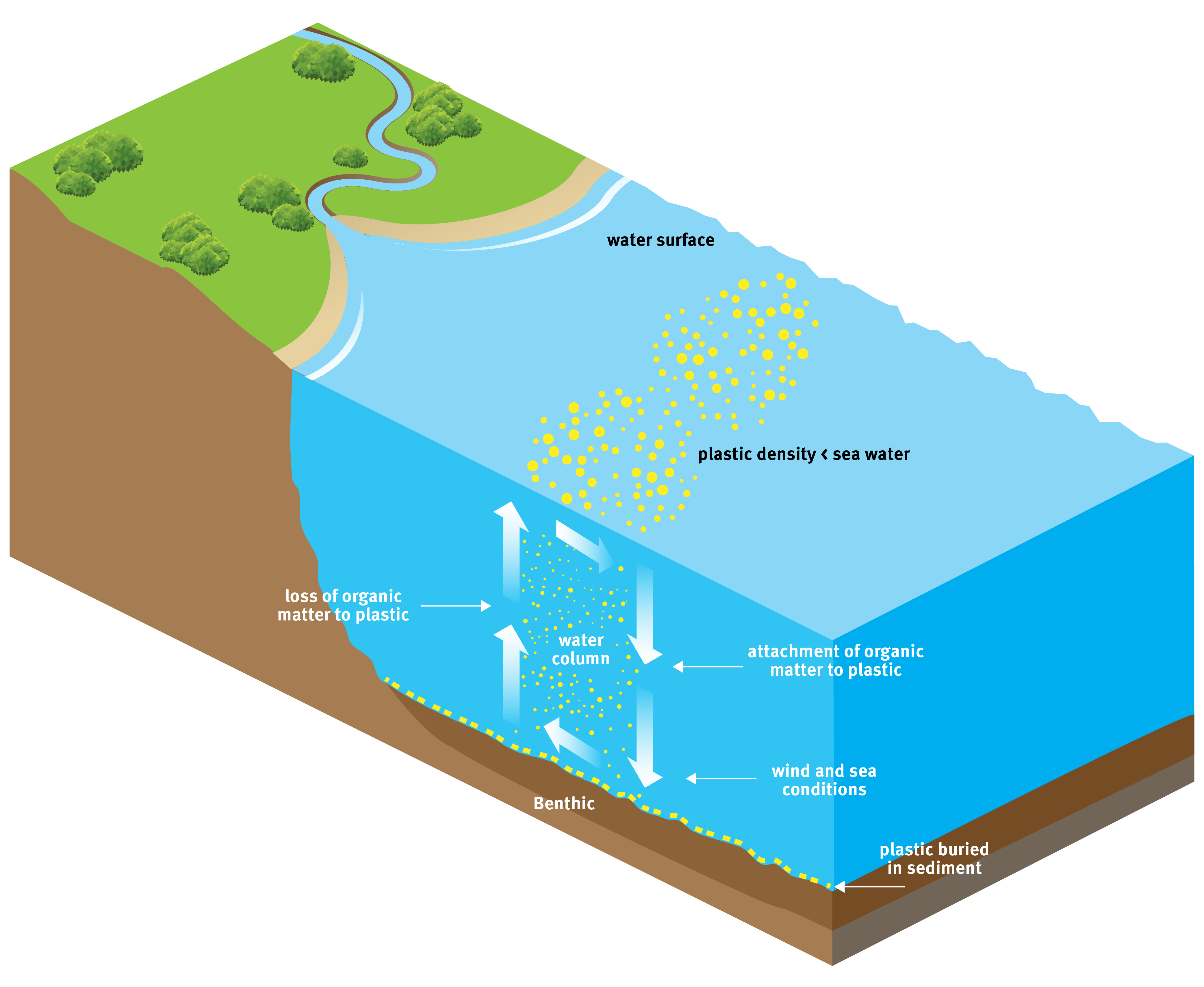|
|
FreshwaterFreshwater Select from the tabs below Waste pollution in freshwater environments, such as lakes and rivers, can occur through careless and deliberate actions. These can result from recreational activities such as fishing and boating, and from wastes transported by wind and stormwater. Freshwater areas where plastic accumulates can be roughly divided into:
According to the Healthy Land and Water 2019 Annual report, seven tonnes of litter were collected in nine South East Queensland freshwater waterways. The amount of waste found in clean-ups such as this shows that rivers themselves can act as significant impact areas, locking the waste in the freshwater system[7]. In Townsville, 92 percent of the waste collected from a stormwater outlet on the Ross River was plastic, with the remainder being metal, glass, cloth, footwear, paper, wood and unknowns[2]. Much of the waste entering rivers from industrial and populated areas is food and beverage containers according to a 2011 study. The types of industries close to waterways also influence how much waste enters freshwater systems[4]. Research has shown that river deltas receive 52 percent of river-borne plastic pollution, though they make up less than 1 percent of global coastlines. Rocky shores, in contrast, receive only 6 percent of the plastic pollution, though they make up 73 percent of global coastlines. No type of coastal environment is unaffected by river-borne plastic pollution[8]. The abundance and nature of plastic pollution in freshwater systems in Queensland requires further investigation[11][3]. SurfaceWaste is often found floating on the surface of freshwater lakes, dams and rivers. It can remain on the surface until it either breaks up, breaks down, floats in the water column, sinks to the bottom or gets deposited elsewhere. As microplastics and nanoplastics are light, it is not surprising that they are found on the surface of freshwater[5][11]. Some studies suggest they may adsorb contaminants that can have toxicological effects on freshwater biota[11].
Water columnThe fate of plastic as it breaks up in the ocean and freshwater systems is unclear. It was believed that it either floated or sank. Recent evidence has demonstrated that plastic also exists in the water-column and its buoyancy depends on its make-up and how many organisms attach to it, affecting its density[6]. The attachment of bacteria and algae to plastic is called biofouling. Waste can cycle from the surface through the waste column, to the bottom sediment and up again as it acquires waterborne organisms and other material (see diagram above). Floor (Benthos)The impacts of waste pollution, buried in freshwater sediment, is poorly documented. Most of the existing research has measured plastic, which appears to occur in all water layers including the bottom sediment layer[1][12]. Living things (Biota)Although some studies have investigated plastic in biota in freshwater systems, a 2019 paper suggests that methodologies for understanding the effects of plastic on biota are not standardised and further research is required[10]. One study suggests that the impacts on biota in freshwater systems will mirror those in the marine environment[9]. Vegetated wetlands act as litter traps, removing large quantities of litter that would otherwise remain in waterways. References
Last updated: 10 May 2021 This page should be cited as: Department of Environment, Science and Innovation, Queensland (2021) Freshwater, WetlandInfo website, accessed 25 June 2024. Available at: https://wetlandinfo.des.qld.gov.au/wetlands/management/pressures/litter-illegal-dumping/sinks/fresh-water/ |

 — Department of Environment, Science and Innovation
— Department of Environment, Science and Innovation


